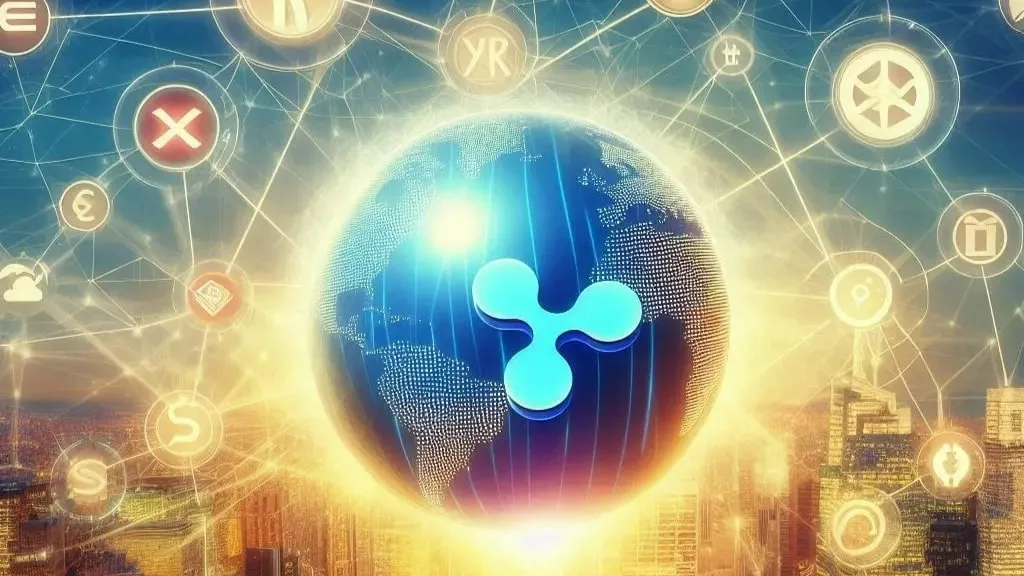XRP, once viewed by many as a stagnant token, is showing signs of entering a transformative phase. Driven by institutional accumulation, strategic partnerships, and Ripple’s progress on the regulatory front, the token is increasingly being recognized as a bridge between traditional finance and blockchain infrastructure.
Institutional Accumulation Signals Market Confidence
Behind the scenes, major financial institutions and corporations have been quietly increasing their XRP holdings. Public records indicate that firms like Japan’s SBI Holdings now collectively control over $11 billion worth of XRP. This accumulation suggests a fundamental shift in market perception: XRP is moving beyond speculation and emerging as a practical tool for treasury management, cross-border liquidity, and settlement solutions.
By integrating XRP into their operational frameworks, these institutions are leveraging its speed, low fees, and transparency. Ripple’s network allows transactions to settle in seconds at a fraction of the cost of traditional systems such as SWIFT, offering a competitive advantage for banks and corporates alike. Analysts view this trend as a key indicator that XRP’s real-world utility is gaining recognition, reinforcing its long-term role in global finance.
Strategic Global Partnerships Drive Adoption
Ripple has been expanding its footprint in regions seeking modernized payment infrastructure. In the Middle East, the company is collaborating with Bahrain FinTech Bay to explore pilot programs for stablecoin issuance and digital settlements. In Asia, Ripple supports SBI Remit to facilitate instant cross-border transfers between Japan and Southeast Asia. Additionally, partnerships with FRS are focused on optimizing international remittance flows, highlighting Ripple’s ability to cater to a range of financial ecosystems.
These collaborations underscore a broader trend: XRP is no longer seen merely as a speculative asset. Instead, it is positioned as an engine for real-world financial products, with the XRP Ledger (XRPL) serving as a fast, efficient, and compliant network for institutional use. The ledger’s capacity to process transactions rapidly and transparently is proving essential for banks and financial services firms exploring blockchain-based solutions.
Regulatory Progress and Bank License Applications
Ripple’s prolonged legal battle with the U.S. Securities and Exchange Commission (SEC) appears to be nearing a favorable resolution. The company has now applied for a U.S. banking license, a milestone that could allow Ripple to offer financial services directly while enabling traditional banks to hold XRP legally on their balance sheets.
If approved, this move could transform XRP into a recognized reserve asset within regulated finance. It would also position Ripple as a fully compliant intermediary, capable of bridging conventional banking systems with blockchain-based settlements. The potential ripple effects on XRP’s adoption and institutional interest are significant, as banks could begin holding and transacting with XRP in a fully compliant manner.
XRP ETF Developments and Institutional Appetite
The banking license application coincides with renewed interest in XRP-related exchange-traded funds (ETFs). Several spot XRP ETF applications are currently awaiting SEC decisions, with approvals potentially set to follow the resolution of the current government shutdown. Institutional investors are already preparing for this possibility, as evidenced by Theorum Capital launching a regulated fund tied to XRP performance.
This development indicates growing demand for compliant XRP exposure. As regulatory clarity increases, XRP could attract more institutional capital, providing a boost to liquidity, market depth, and overall adoption. Investors view these events as signals of XRP’s transition from a niche digital asset to a mainstream financial instrument.
Implications for the Crypto Market
The convergence of partnerships, institutional accumulation, and regulatory progress marks a turning point for XRP. Unlike many cryptocurrencies primarily driven by retail speculation, XRP’s growth is increasingly anchored in real-world applications and compliance-ready frameworks. This approach could differentiate it from competitors, solidifying its role in cross-border finance and enterprise-level blockchain adoption.
For the broader crypto market, Ripple’s advancements with XRP highlight the potential of tokens that combine decentralized technology with regulatory legitimacy. As other cryptocurrencies strive to gain mainstream acceptance, XRP’s trajectory offers a blueprint for achieving institutional trust and long-term viability.
Looking Ahead
Ripple XRP’s current momentum reflects a blend of strategic foresight and operational execution. By securing partnerships in key global regions, pursuing a U.S. banking license, and attracting institutional accumulation, Ripple is laying the foundation for XRP’s next phase of adoption.
While challenges remain, including regulatory oversight and competitive pressures, the combination of a compliant ledger, global partnerships, and growing institutional interest positions XRP as a serious contender in both digital and traditional financial markets.
Investors and analysts will continue to monitor developments closely, particularly the outcomes of XRP ETF applications and Ripple’s banking license approval. These milestones are expected to serve as catalysts, potentially unlocking significant capital inflows and accelerating XRP’s integration into mainstream finance.
Conclusion
Ripple XRP is evolving from a perceived speculative token into a bridge between traditional banking and blockchain-based financial infrastructure. Institutional accumulation, global partnerships, and regulatory progress collectively signal a new era for the token. As Ripple pursues banking license approvals and institutional adoption grows, XRP could play a central role in shaping the future of cross-border finance, offering faster, cheaper, and more transparent transaction solutions for global markets.
Post Views: 107

